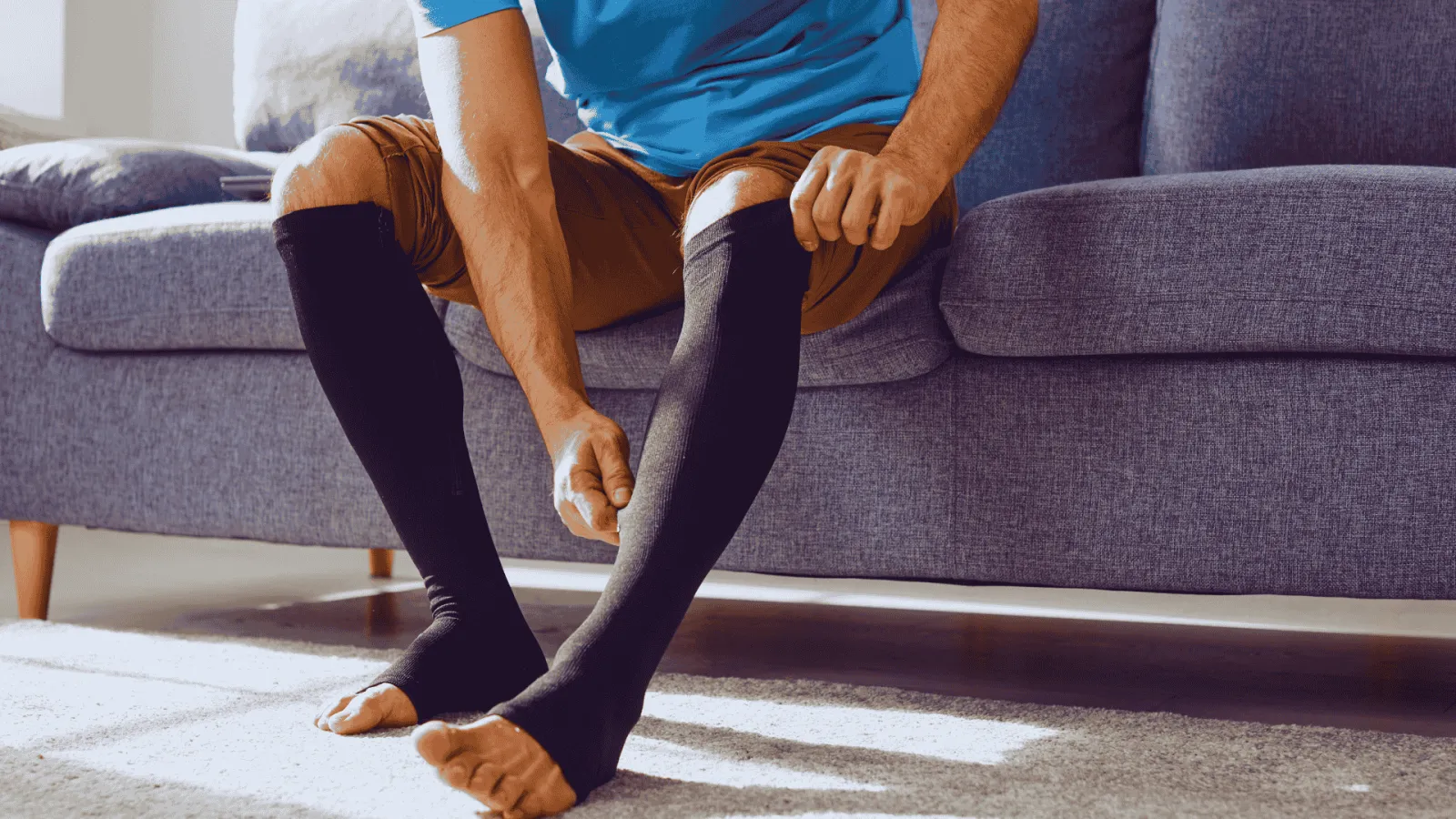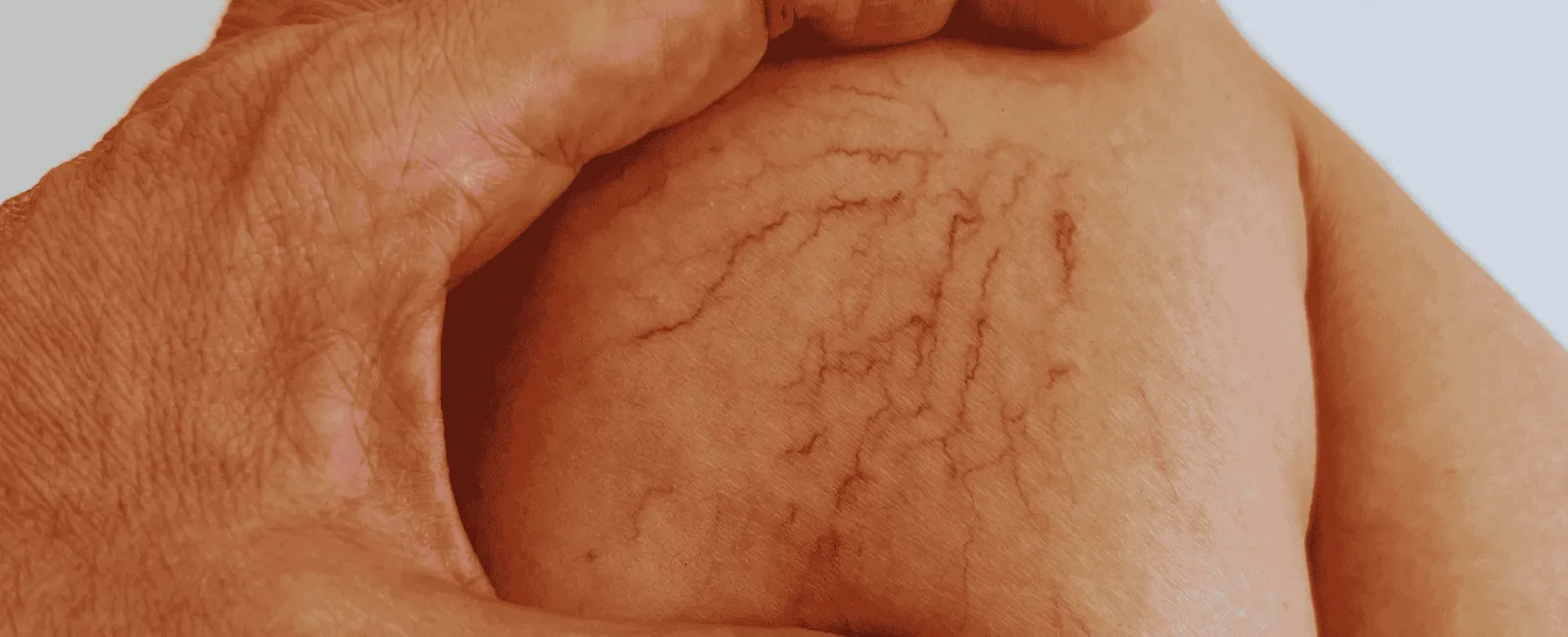If you've started noticing bulging, twisted veins on your legs, you're not alone. Varicose veins are extremely common, especially as we get older, spend more time on our feet, or go through hormonal changes like pregnancy. For many people, they're mostly a cosmetic concern. But sometimes varicose veins are a sign that the veins in your legs aren't working properly, and that's when you shouldn't ignore them.
Knowing when to worry about varicose veins can be confusing. Is it just an ugly vein, or could it lead to pain, swelling, or even blood clots or ulcers? That's exactly what we'll break down here, so you can decide when it's time to get checked by a specialist.
At Advanced Vascular & Vein, we specialize in diagnosing and treating the underlying cause of varicose veins with minimally invasive, in-office procedures. If you're already feeling concerned, you can learn more about our varicose vein treatment in Atlanta or schedule an evaluation to get clear answers.
What Are Varicose Veins, Really?

Varicose veins are enlarged, twisted veins that usually appear on the legs and feet. Under normal conditions, tiny one-way valves inside your leg veins help push blood back up toward your heart. When these valves weaken or fail, blood can pool in the vein, resulting in increased pressure. Over time, that pressure leads to the bulging, rope-like veins most people recognize as varicose veins.
This process is often called venous reflux, and it's more than just a cosmetic problem. Venous reflux can lead to symptoms such as heaviness, aching, swelling, and skin changes around your ankles and lower legs.
Our comprehensive overview of varicose vein conditions explains how venous reflux develops, who is at higher risk, and how it can progress if left untreated.
Who Is Most at Risk?
Several factors can increase your chances of developing varicose veins:
- Genetics: A family history of varicose veins or vein disease.
- Age: Vein walls and valves naturally weaken over time.
- Gender: Women are more prone due to hormonal changes (pregnancy, menopause, birth control).
- Pregnancy: Increased blood volume and pressure on the veins of the pelvis and legs.
- Prolonged standing or sitting: Especially in certain occupations.
- Obesity or sedentary lifestyle: Extra pressure on leg veins.
- Previous blood clots or injuries: Past damage to veins and valves.
Having risk factors doesn't automatically mean you'll develop serious problems, but it does make it more important to know the signs of when to worry about varicose veins and when they're likely to stay mild.
When Varicose Veins Are Mostly Cosmetic
Let's start with the good news, and that's not every varicose vein is dangerous or medically urgent. In many cases, they're simply a visible sign of aging veins and weaker valves, without causing significant symptoms or complications.
You're usually in the "mostly cosmetic" category if:
- Your veins are visible or bulging but not painful.
- You have occasional mild leg fatigue after a long day, but no ongoing heaviness or throbbing.
- There is no swelling in your ankles or lower legs by the end of the day.
- Your skin color around the ankles looks normal (no brown or reddish patches).
- There are no sores, ulcers, or hardened areas around the veins.
Even when varicose veins are mainly cosmetic, many people choose treatment because they feel self-conscious or want to prevent progression. Our varicose vein specialists in Atlanta can evaluate your veins and discuss options ranging from lifestyle changes to minimally invasive procedures.
When to Worry About Varicose Veins: Red Flag Symptoms
The key question most people have is: when should you worry about varicose veins? Several warning signs suggest your veins are doing more than just changing how your legs look; they may be affecting your circulation and skin health.
1. Persistent Pain, Heaviness, or Throbbing
Occasional tired legs after a long day are normal. But if you feel ongoing aching, heaviness, burning, or throbbing, especially worse at the end of the day or after long periods of sitting/standing, that's a sign your veins are struggling to keep blood moving efficiently.
This ongoing discomfort is a strong clue that you should have your veins evaluated with an ultrasound to look for venous reflux.
2. Swelling in Your Ankles or Lower Legs
Notice your socks leaving deep marks, or your ankles looking puffy by evening? Swelling is not just a cosmetic issue; it suggests that blood and fluid are pooling in your lower legs. This is a major sign of chronic venous insufficiency and is one of the clearest indicators of when to worry about varicose veins.
3. Skin Color Changes or Thickening
Long-standing venous reflux can cause blood components to leak into the tissues, leading to brownish or reddish discoloration around your ankles and lower legs. The skin can become dry, itchy, and eventually thick or hardened.
These changes mean your vein condition has progressed beyond "cosmetic" and is now affecting your skin and circulation, and without treatment, this can lead to ulcers.
4. Open Sores or Ulcers Near the Ankles
Venous ulcers are open, non-healing wounds that usually appear near the inside of the ankle. They often start as irritated, discolored skin that gradually breaks down. Venous ulcers are a clear indicator of advanced disease and require medical treatment. This is definitely a time to worry about varicose veins and seek prompt care.
5. Sudden Bleeding from a Varicose Vein
Sometimes, a varicose vein close to the surface of the skin can burst and bleed. Even if the bleeding stops with pressure, it's a warning sign that the vein is fragile and under too much pressure. Immediate evaluation is important after any episode of bleeding.
6. Warm, Red, or Painful Vein (Possible Clot)
If a varicose vein suddenly becomes hard, warm, red, and tender, it may indicate superficial thrombophlebitis, a blood clot in a surface vein. While this is different from a deep vein thrombosis (DVT), it still needs medical attention to rule out more serious issues.
7. One Leg Significantly Larger or More Painful Than the Other
If swelling, pain, or color changes are much worse in one leg than the other, especially if it's sudden, this could indicate a deeper problem. A vein specialist can perform an ultrasound to rule out DVT or other serious conditions.
If you're noticing any of these warning signs or experiencing multiple symptoms of varicose veins, it's time to move from "wait and watch" to "get evaluated."
Possible Complications If Varicose Veins Are Ignored
Not everyone with varicose veins will develop complications, but leaving them untreated when symptoms are present increases your risk. Some of the most common complications include:
- Chronic venous insufficiency: Long-term pooling of blood that leads to swelling, skin discoloration, and discomfort.
- Venous ulcers: Painful, slow-healing sores typically located near the ankle.
- Superficial thrombophlebitis: Blood clots in surface veins, causing pain, redness, and warmth.
- Bleeding: Fragile surface veins can rupture with minor trauma or even spontaneously.
- Increased DVT risk: In some patients, underlying venous disease can be associated with a higher chance of deep vein thrombosis.
The goal of early diagnosis and treatment is not just to reduce the look of your veins but to prevent these more serious problems from developing.
When to See a Vein Specialist in Atlanta
You should consider seeing a vein specialist if:
- Your varicose veins cause pain, throbbing, heaviness, or burning.
- You have swelling in your ankles or lower legs that worsens throughout the day.
- The skin near your ankles is darkening, itching, or thickening.
- You've had a venous ulcer or an open sore that isn't healing.
- You've experienced bleeding from a varicose vein.
- You have a history of blood clots or a strong family history of vein disease.
At Advanced Vascular & Vein, our interventional radiology team uses advanced ultrasound imaging to identify where venous reflux is occurring and to tailor a treatment plan that addresses the underlying problem, not just the visible veins.
What to Expect From Varicose Vein Evaluation and Treatment
Your visit typically begins with a detailed history and physical exam, followed by a venous ultrasound to evaluate blood flow in your leg veins and locate any failing valves. Based on your results, we'll recommend a personalized treatment plan.
We're proud to offer minimally invasive varicose vein treatments that are performed in-office, with little to no downtime. Common options include:
- Endovenous ablation (venous closure): Using radiofrequency or laser energy to gently seal the diseased vein so blood is rerouted to healthy veins.
- Ultrasound-guided sclerotherapy: Injecting a solution into problem veins to close them and fade their appearance.
- Microphlebectomy: Removing larger surface veins through tiny, micro-sized incisions.
- Venous stenting: For deeper vein narrowing or compression, such as May-Thurner Syndrome, to restore normal blood flow.
Most patients are able to walk immediately after treatment and return to normal activities quickly. Many notice rapid relief of heaviness, swelling, and aching, along with cosmetic improvement.
What You Can Do at Home While You Wait for Care

While home measures won't "cure" varicose veins, they can reduce discomfort and slow progression:
- Wear compression stockings if recommended; they help support your veins and reduce swelling.
- Elevate your legs above the level of your heart when resting to reduce pooling.
- Stay active: Walking and calf exercises improve circulation.
- Avoid long periods of sitting or standing: Take breaks to move around and stretch.
- Maintain a healthy weight to decrease pressure on your leg veins.
These steps are especially helpful if you're waiting for an appointment, but they're not a substitute for a proper evaluation when you're experiencing significant symptoms or warning signs.
FAQs: Common Questions About When to Worry
Are Varicose Veins Always Dangerous?
No. Many varicose veins are mainly cosmetic and never lead to serious complications. However, if you have pain, swelling, skin changes, ulcers, or bleeding, that's when to worry about varicose veins and seek evaluation from a specialist.
Can Varicose Veins Turn into a Blood Clot?
Varicose veins can sometimes develop superficial blood clots (superficial thrombophlebitis), which are usually less serious than deep vein clots but still require medical attention. Underlying venous disease may also be associated with an increased risk of deep vein thrombosis in some patients.
Do All Varicose Veins Need to Be Treated?
Not always. If your veins are mild and not causing symptoms, you may choose to monitor them and use lifestyle measures. Treatment is recommended when you have discomfort, swelling, skin changes, ulcers, or other complications.
Ready to Find Out What Your Varicose Veins Really Mean?
You don't have to guess whether your veins are just cosmetic or something more. At Advanced Vascular & Vein, we provide comprehensive evaluations and advanced varicose vein treatment options tailored to your specific condition. Our minimally invasive, in-office procedures are designed to relieve symptoms, improve circulation, and help your legs look and feel better.
To schedule your appointment, call 678-284-2573 or book a consultation online. A short visit can give you clarity, peace of mind, and a clear plan for healthier legs.


